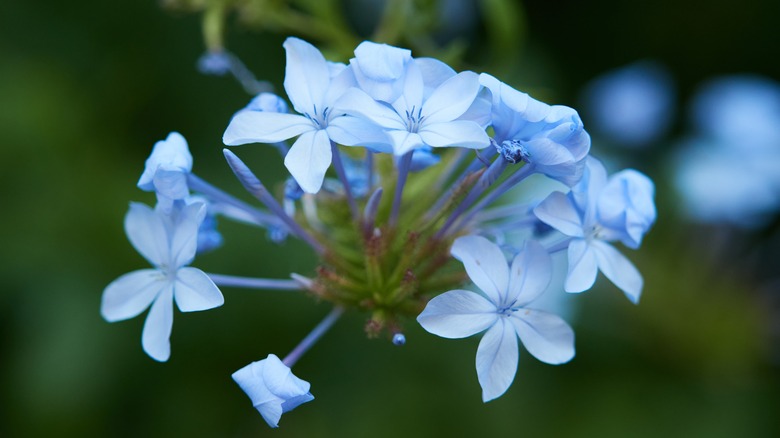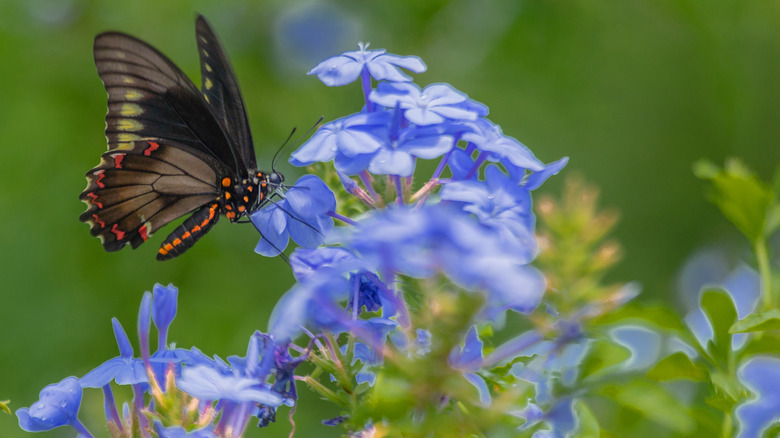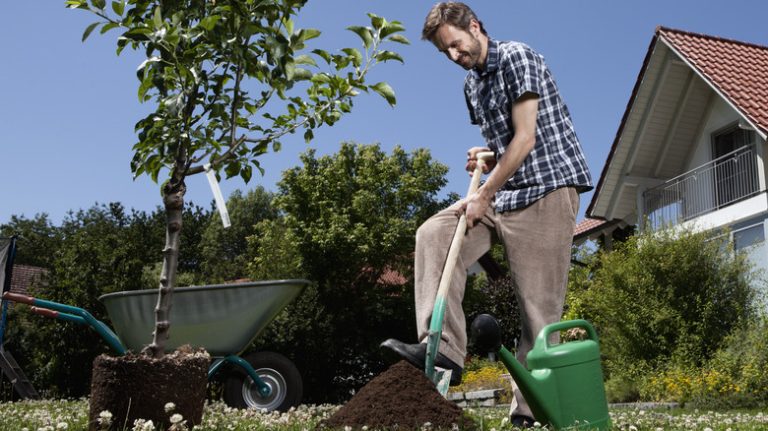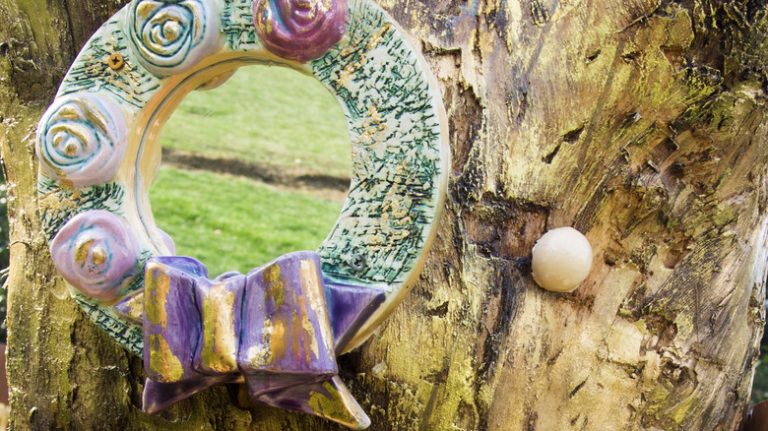Who doesn’t like watching butterflies, bees and other pollinators at work in their garden? Whether you make an entire butterfly garden or just scatter a few pollinator-friendly plants throughout your landscaping, it’s fun and rewarding to create a garden that is as beloved to pollinators as it is to people. Growing cape plumbago, also called leadwort, in your garden is a great way to appeal to your local pollinators and attract butterflies to your garden.
Cape plumbago (Plumbago auriculata) is sure to attract the attention of both human and insect admirers with its unique blue-gray flowers and pleasant scent. Native to South Africa, plumbago grows well in the southern U.S. and isn’t prone to becoming invasive. The name plumbago comes from the Latin word for lead, as apparently ancient naturalists found the flowers’ unusual color to be reminiscent of the metal. This is also where the plant’s common name of leadwort comes from.
Growing plumbago

Cape plumbago is hardy in zones 8 through 11 but can also be grown in containers and overwintered indoors in colder regions. It’s closely related to Plumbago zeylanica which has white flowers and is native to the southern United States. Both species of plumbago thrive in full sun and well-draining soil and are somewhat drought-tolerant after they have been established.
When planting plumbago in the landscape, keep in mind that it can grow large, so give it a fair amount of space. While cape plumbago can grow up to 10 feet tall and just as wide, prune it back heavily if it is overwintering indoors. Cape plumbago can also be grown as an annual in colder areas, in which case it will likely grow to only 3 feet at most. While plumbago is often grown as a shrub, it can also be treated as a vine, if you tie its long weak branches onto a trellis or weave them into the structure. Just don’t forget to wear your gardening gloves when working with this plant, as it often causes skin irritation.
Plumbago for attracting pollinators

Plumbago isn’t just beautiful to people. Bees and butterflies also adore the plant and its pale blue flowers. In Florida and nearby areas, it’s even a common host plant to the Cassius blue butterfly (Leptotes cassius). Despite its appeal to bees and butterflies, deer generally leave plumbago alone.
Cape plumbago is a great addition to sunny butterfly gardens where it should pair perfectly with coneflowers, black-eyed susans, and sterile varieties of butterfly bush and lantana. As plumbago can grow relatively tall, consider using it towards the back of the border if you are growing it in the landscape as a perennial. Growers in more northern climates could consider using plumbago to create a butterfly container garden. Since many gardeners want a variety of colors in their butterfly gardens, which makes plumbago an especially good choice since there aren’t many other plants with such distinctive blue-gray flowers.



